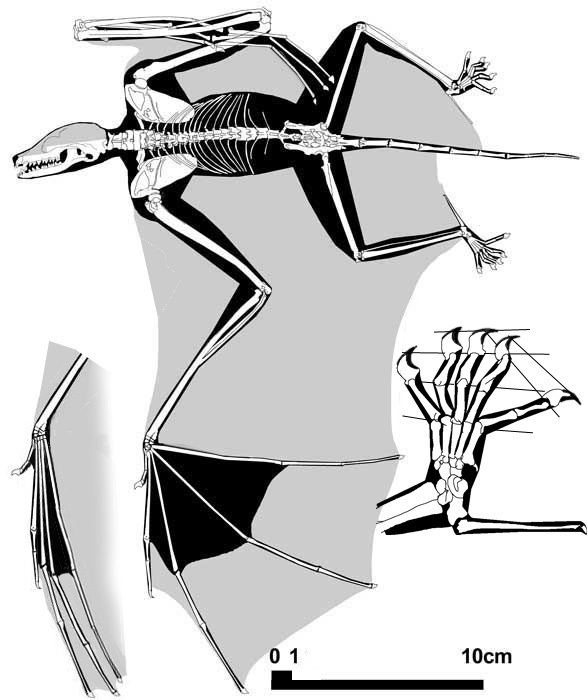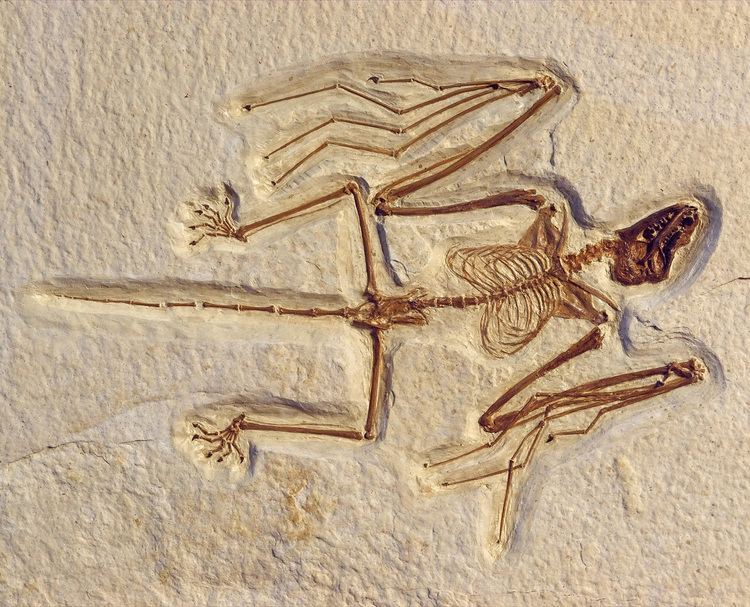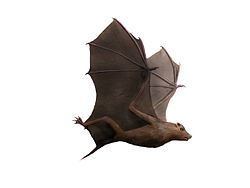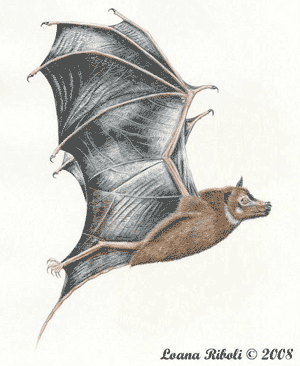Family †Onychonycteridae Scientific name Onychonycteris finneyi Rank Genus | Species †O. finneyi Phylum Chordata Order Bat | |
 | ||
Similar Bat, Icaronycteris, Archaeonycteris, Palaeochiropteryx, Yinpterochiroptera | ||
Ark survival evolved badass onychonycteris bat tame bulk grinder modded 23 ark gameplay
Onychonycteris is the most primitive of the two oldest known monospecific genera of bat, having lived in the area that is current day Wyoming during the Eocene period, 52.5 million years ago.
Contents
- Ark survival evolved badass onychonycteris bat tame bulk grinder modded 23 ark gameplay
- History and description
- Flight vs echolocation
- References

History and description

Two specimens of Onychonycteris were found in the Green River Formation in 2003, and placed in a new family when the discovery was published in Nature, in February 2008. Onychonycteris occurs alongside Icaronycteris index, previously thought to be the most primitive known bat species. Onychonycteris was unique among bats in that it had claws on all five fingers, as opposed to two or three in all other known species, hence Onychonycteris meaning "clawed bat". The specific epithet is a tribute to the fossil prospector and preparator who discovered it, Bonnie Finney.
Flight vs. echolocation

Onychonycteris finneyi was the strongest evidence so far in the debate on whether bats developed echolocation before or after they evolved the ability to fly. O. finneyi had well-developed wings, and could clearly fly, but lacked the enlarged cochlea of all extant echolocating bats, closer resembling the old world fruit bats which do not echolocate. This indicates that early bats could fly before they could echolocate.

However, an independent evaluation of the Onychonycteris reference fossil in 2010 provided some evidence for other bone structures indicative of laryngeal echolocation, raising the possibility that Onychonycteris finneyi possessed the ability to echolocate after all. They did acknowledge that the fossil itself has been flattened by the fossilization process (a 'pancake fossil'), and thus it was difficult to ascertain the exact bone structure and configuration, a fact that still casts a degree of uncertainty on the results of both studies.

It is unknown whether Onychonycteris had the large eyes of most nocturnal animals as specimens with intact eye sockets have yet to be found. A lack of enlarged eyes would indicate that this species may have been diurnal, solving the problem of how primitive bats evolved flight without the ability to navigate at night using echolocation.
